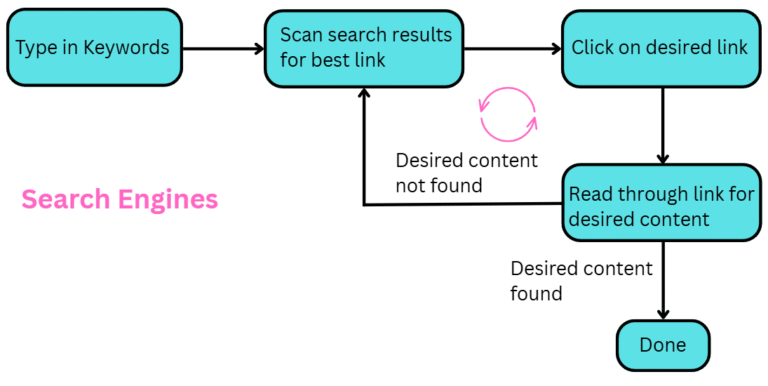Table of Contents
ToggleWhat is AI?
Although forms of artificial intelligence have been around since the mid-1900s, Generative AI is the type of AI that exploded in late 2022 after the release of ChatGPT. Generative AI tools like ChatGPT are also known as Large Language Models (LLMs for short) because they specialize in generating human language. Generative AI is a form of artificial intelligence that creates content based on user prompts written in natural language. For simplicity, I will drop the “generative” and refer to this technology as “AI” for the rest of this course. As described in the figure below, the user simply inputs a prompt into the AI tool, the AI tool quickly processes the prompt, and it outputs the desired content.

Think of AI as a really smart assistant that can help you write, brainstorm, draw, or solve problems with minimal effort. The key word is assistant—AI should act as your copilot, not the pilot. Many people expect it to perfectly execute every task, get disappointed, and dismiss it as overhyped. Approaching AI with the right mindset and expectations is half the battle. AI isn’t meant to handle 100% of every task. Depending on the situation, it might take care of 20%, 50%, or even 90%. Sometimes it’ll drop the ball completely and handle 0%. But even partial help leads to meaningful productivity gains. When used consistently, those small productivity boosts compound over time, just like consistently investing small amounts in the stock market can eventually make you a millionaire.
Real World Example
Let’s say I’d like to plan a tropical vacation but am having trouble thinking of a location. I can open my favorite AI tool and type in the following:
“Suppose you are an experienced travel advisor. Suggest 5 tropical vacation destinations for my wife and I to enjoy a 5 day vacation. The locations should offer plenty of beautiful beaches, mountains, adventurous hikes, unique food, must be within a 6 hour flight of Chicago IL, and not be overly touristy. Total cost of the trip should not be more than $1,700.”
Note a couple of key elements of this prompt: it’s highly descriptive and specific. This is completely different from a typical Google search, which is high level and only contains a handful of keywords. We didn’t just mention a tropical vacation – we specified many other relevant details:
- How long we’d be there
- That it’s only my wife and I
- Must haves: beautiful beaches, mountains, adventurous hikes, unique food, within a 6 hour flight of Chicago
- Must avoid: overly touristy, total cost > $1,700.
This brings us to a key lesson: AI’s strength lies in its ability to understand complex, nuanced requests and provide personalized responses. Traditional search engines simply aren’t designed to do this. Conversely, the best AI users are skilled communicators – they can translate complex ideas into simple, well-structured prompts. We’ll learn all the tips to communicate effectively with AI in the next section.
How are search engines different?
Let’s briefly consider how to accomplish the same vacation task using a search engine like Google, illustrated in the diagram below. First, a wordy prompt such as the one above would yield nonsensical results as it would confuse the search engine. Since search engines are designed for users to enter only a handful of keywords, we’re constrained to a prompt such as “best tropical vacation destinations” if we want halfway decent results. Then we’ll click through a handful of links and read through them until we’ve selected a place that meets all of our criteria. After we’ve finished, we might’ve read through 5 articles and wasted 30 minutes or more. This was revolutionary when the internet first appeared in the early 2000s, but now inefficient thanks to AI.

This is not to say that we should ditch search engines completely and only rely on AI tools. AI is not a cure-all technology, and I’d encourage you to be cautious of those who claim otherwise. There are plenty of instances where choosing a search engine over AI is still preferred:
- you need verified information from trusted sources (AI will sometimes hallucinate)
- you’re looking for up-to-date or real time information/data (AI tools often have knowledge cutoff dates, sometimes several years into the past)
- you need to access specific websites, databases, or online services directly
- you’re researching topics where precision and academic rigor are absolutely essential
- when using AI will take longer.
We’ll cover these topics in more detail in the Limitations of AI section.
Now that you have a feel for what a good AI prompt looks like, try to think of a few additional ways you could use AI in your career and/or personal life along with associated prompts. Maybe you need recipe suggestions for the ingredients you have on-hand, a few ways to invest $5,000 given your risk tolerance and financial goals, or help drafting the script for a YouTube video. Type your prompts into an AI tool and review the results. Next we’ll dive deeper into how to write effective AI prompts.
